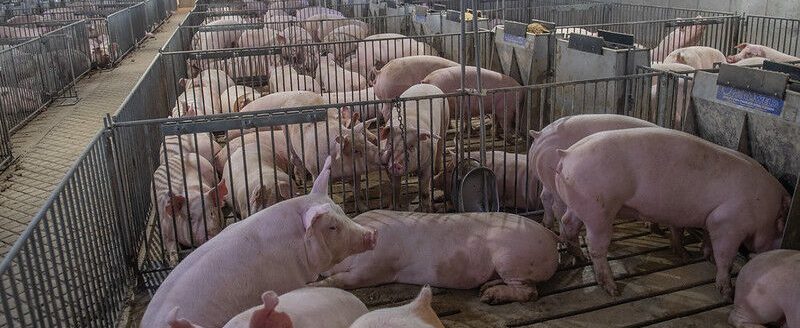Iowa State Animal researchers explore better handling tools for non-ambulatory swine
What do producers do when livestock are not able to walk, due to illness or injury? This problem has not had an easy solution, though that may change soon, thanks to researchers at Iowa State University.
National standards for humane management of swine require sick or injured non-ambulatory pigs to be moved with a drag mat in most situations. This reduces risk and stress to pigs and is also meant to make moving an animal safer and less stressful for swine producers.
Yet an effective and practical drag mat has been a question for the industry. The National Pork Board guidance on humane swine handling through the Pork Quality Assurance Plus certification and educational programs sets criteria swine caretakers and producers must use if they want certification through the Common Swine Industry Audit. The 2014 rules prohibit “dragging of conscious animals by any part of their body except in the rare case where a non-ambulatory animal must be moved for a life-threatening situation,” and indicate that non-ambulatory pigs may be moved by using a drag mat.
“These guidelines sound straightforward,” said Anna Johnson, professor of farm animal behavior and welfare in the Department of Animal Science at Iowa State. “But producers have been telling us that to meet the requirements, they need better tools that are economically feasible, pig safe and worker safe.”
As a result, Johnson worked with animal science graduate student Ella Akin to research the problem. Akin, now a health and animal care associate for a pig production company in Nebraska, led the study for her master’s thesis, in cooperation with other team members. Their findings are described in two new ISU Animal Industry Reports that review the experience of workers in a pork production facility using four different types of handling tools.
In preliminary work, Akin observed caretakers using rubber weaning mats. “We found that these rubber mats really are not satisfactory drag mats for finisher pigs,” she said. “The mats were too heavy, tore easily and pigs kept sliding off. They also were difficult for caretakers to handle.”
This led Akin and the team to consider better options. They adapted other types of handling tools for on-farm use, developing three modifications to test: a sked (from an HMH sked rescue system), a sled and a deer sled modified from the type that hunters use. Five swine facility employees—one woman and four men—assessed the handling tools on a commercial swine facility site in central Iowa.
In two controlled experiments, they moved three sizes of market-weight pigs (cadavers, about 130, 201 and 216 pounds). Employees used each handling tool to move all sizes of pig over a distance representing a typical length from a home pen to a hospital pen. The employees also had to roll, position and reposition the pigs. The handling tools’ effectiveness were rated based on employee heart rate, force, handling tool duration and durability. Researchers also assessed the tools based on cost and on the employees’ satisfaction with using the handling tools.
In the end, the sked was considered the easiest tool to use overall, in part because of its convenient buckle-type restraints that helped keep the cadavers in place. The sled was ranked as more difficult or neutral, due to the longer time it took to secure string-type restraints. The modified deer sled was considered very easy to use due to its size and weight, but not preferred without restraint straps.
“It is important to look at handling tools that are CSIA compliant,” said Johnson. “The stakes are pretty high. We need better solutions. This is a good start and gives us an idea of what isn’t working and what might work better. But these options still need more testing in different situations.”
Details of the research are published in two new ISU Animal Industry Reports, Employee Survey to Determine Movement Ease for Grow-Finish Pig Cadavers on-Farm using a Sked, Deer Sled and Modified Deer Sled and Movement Ease for Grow-Finish Pig Cadavers On-Farm using a Sked, Deer Sled, and Modified Dear Sled Other authors include animal science professors Jason W. Ross and Kenneth J. Stalder; Suzanne T. Millman, professor of veterinary medicine; and Dr. Cassandra Jass and John Stinn, with Iowa Select Farms.
The research was supported by the Iowa Pork Producers Association, the College of Agriculture and Life Sciences at Iowa State and the USDA, with in-kind assistance from Iowa Select Farms.
